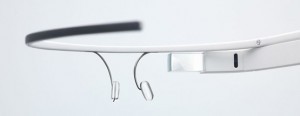Google Glass: A Glimpse into the Future of Search
Introduced two years prior, Google Glass represents a giant step in technological advancement, offering a sneak peek into what the future of search might hold. This device, with its minimalistic interface displayed on a tiny screen in front of the user’s eye, allows for a range of functionalities. From capturing photos and videos to sharing them with friends, Google Glass promises a lot. However, with such innovation comes a set of concerns. This article explores the features of Google Glass, its implications for search, and the potential challenges it might face.
Features of Google Glass
The standout feature of Google Glass is its simplicity. Unlike the increasing user-friendliness of smartphones and tablets, Google Glass takes it a notch higher. The device consists of a small metallic attachment that connects to specially designed glasses. This attachment has a thin cable running from the right ear to the eye, with a translucent screen and a single button on the side.
Activation and Interface
Activating the device is as simple as pressing the button or uttering the phrase, “OK Glass”. Once activated, operations on the device are conducted through the side button or voice commands. The interface, though simple, has a limited display capacity due to its size. For instance, after capturing a photo, sharing it requires a voice command followed by scrolling through contacts using the side button.
Camera and Messaging
Google Glass includes a camera for photos and videos, with the added advantage of hands-free operation, making it one of the quickest cameras available. Integrated messaging allows users to receive notifications and send SMS or Google Plus messages using voice commands.
Navigation Features
Additionally, Google Glass offers navigation features, displaying real-time walking or driving directions.
Search Implications
Should Google Glass gain widespread acceptance, it will significantly influence the search marketing industry. Some of the notable impacts include:
- Display Limitations The device’s limited display capacity means it can show only one search result at a time. This will push search engine marketers to aim for the top spot rather than settling for the first page.
- Voice-Driven Search With voice commands, users are likely to use longer queries, prompting Google to optimise results for spoken queries.
- Advertising Development While advertising on Google Glass is currently prohibited, the future might see visually appealing and targeted ads, emphasising the importance of geotagging for businesses.
Challenges Ahead for Google Glass
While Google Glass offers exciting features, it’s not without its challenges. The current text display limitation is a significant concern. For instance, the New York Times app can only display part of a news headline, making web searching less effective. The device’s battery life is another issue, lasting approximately three hours. Moreover, Google Glass relies on an Android phone, which could drain the phone’s battery. Communication through Google Glass uses Bluetooth, which might incur additional network charges for some users. Lastly, societal acceptance is a hurdle. The discreet nature of photo and video capturing has raised privacy concerns, leading some establishments to ban the device.
Google Glass is an innovative gadget that offers a glimpse into the future. While it has its challenges, it holds promise, much like the early mobile phones that transformed communication.









Leave a Reply
Want to join the discussion?Feel free to contribute!